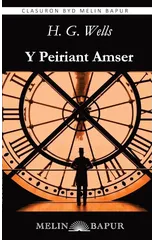H. G. Wells wrote a scientific romance titled The First Men in the Moon. It was a "great story," according to Wells. In the book, a businessman and an eccentric scientist set off on a mission to the moon. A London businessman who goes into seclusion in the country to compose a play serves as the narrator. In order to work quietly, Bedford hires a tiny cottage in the Kent town of Lympne. After two weeks Bedford accosts the man, who proves to be a reclusive physicist. Cavor convinces Bedford to travel to the moon even though he is confident there is no life there. They come across five-foot-tall "Selenites," "huge creatures," and "monsters of simple fatness," which they refer to as "mooncalves," caring for them. The Selenites of the Moon are imprisoning Mr. Bedford and Mr. Cavor, the major characters of "Mr. Bedford and Mr. Cavor in Infinite Space."According to Cavor, Selenites come in a variety of shapes and find fulfillment in performing the particular societal duty for which they were raised. The lunar commander and others who are listening to the conversation are "struck with awe" when Cavor, unfortunately, discloses humanity's predisposition for violence. Bedford implies that Cavor has been prohibited from transmitting to Earth in the future because of this.
H.G. Wells
H.G. Wells was a prolific English writer best known for his science fiction novels. His most notable works include "The War of the Worlds," "The Time Machine," and "The Invisible Man." Wells' writing style was characterized by his imaginative storytelling, social commentary, and exploration of scientific concepts. He is often credited with popularizing the science fiction genre and influencing future writers in the field. "The War of the Worlds" remains his most famous work, depicting a Martian invasion of Earth and exploring themes of imperialism and the resilience of humanity. Wells' contributions to literature have had a lasting impact on the genre of science fiction and continue to be celebrated to this day.





